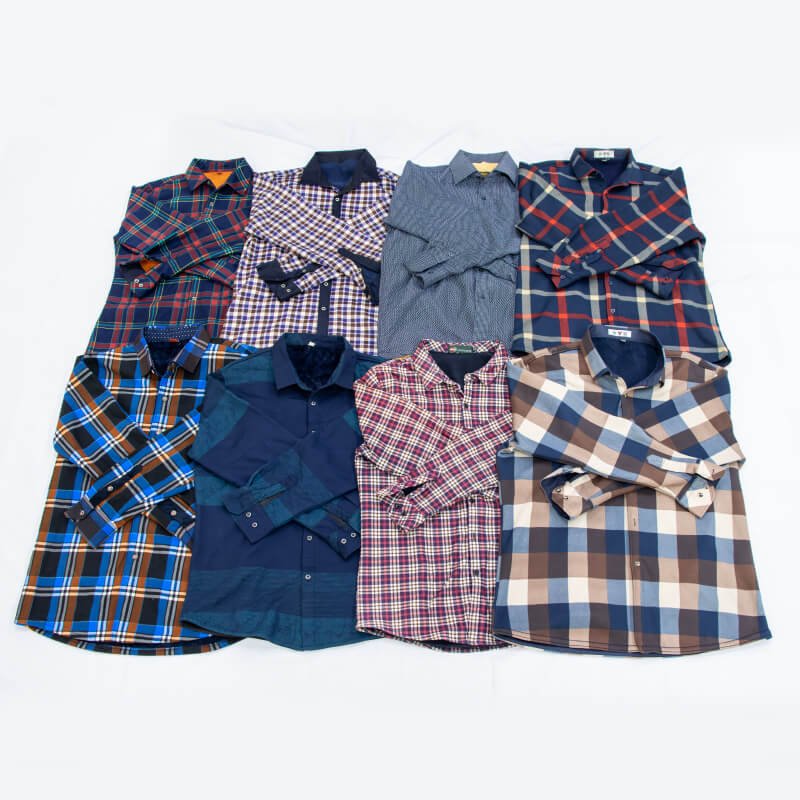Introduction
The market for used clothes has seen remarkable growth in recent years, driven by an increasing awareness of sustainability and the need for affordable fashion. Understanding the various impacts of used clothes is essential for appreciating their role in global fashion, the economy, and environmental conservation. This article explores the economic, environmental, social, ethical, and global impacts of used clothes.

Economic Impact of Used Clothes
Affordability
Used clothes provide an affordable option for consumers who may not have the budget for new, often expensive, clothing. This affordability allows people to access high-quality items at a fraction of their original cost, making fashion accessible to a broader audience. For families and individuals on tight budgets, buying used clothes can significantly reduce clothing expenses, enabling them to allocate funds to other necessities.
Job Creation
The used clothing industry generates employment opportunities in various sectors, including thrift stores, online resale platforms, and logistics. Thrift stores and second-hand shops employ staff to sort, price, and sell donated items. Online resale platforms require developers, customer service representatives, and marketing teams to manage and promote their services. Additionally, the logistics of collecting, processing, and distributing used clothes create jobs in transportation and warehousing.
Market Diversification
The used clothing market introduces a wide range of price points into the fashion industry. This diversification allows consumers from different economic backgrounds to participate in fashion trends without financial strain. By offering a variety of clothing options at different price levels, the market ensures that fashion remains inclusive and accessible to all.

Environmental Impact of Used Clothes
Waste Reduction
One of the most significant environmental benefits of the used clothing market is the reduction of textile waste. By purchasing used clothes, consumers help extend the life cycle of garments, preventing them from ending up in landfills. This practice not only reduces waste but also lessens the environmental burden associated with the disposal of textiles.
Resource Conservation
The production of new clothing consumes vast amounts of water, energy, and raw materials. The used clothing market helps conserve these resources by reducing the demand for new garments. Each item of clothing that is reused saves the resources that would have been required to produce a new piece. This conservation is crucial in mitigating the environmental impact of the fashion industry.
Carbon Footprint
The carbon footprint of producing new clothes is significant due to the energy-intensive processes involved in manufacturing and transportation. By opting for used clothes, consumers can lower their carbon footprint. The environmental benefits of recycling and upcycling garments contribute to a more sustainable fashion industry.

Social Impact of Used Clothes
Charitable Contributions
Many used clothes are donated to charitable organizations, which sell them in thrift stores to fund community programs and services. These contributions support various social causes, including homelessness prevention, job training programs, and healthcare services. By purchasing used clothes, consumers indirectly support these charitable initiatives and contribute to social welfare.
Community Building
Thrift stores and second-hand shops often serve as community hubs, where people can gather, shop, and socialize. These stores promote a sense of community engagement and support local economies. The growing popularity of thrift shopping has fostered a culture of sharing and reuse, strengthening community bonds.
Cultural Exchange
The global nature of the used clothing market facilitates the exchange of fashion trends and styles across regions. Used clothes from different parts of the world introduce diverse fashion histories and cultural expressions to new audiences. This exchange enriches the global fashion landscape and promotes cultural understanding through clothing.

Global Impact of Used Clothes
International Trade
Used clothes play a significant role in global trade dynamics. Many developed countries export used clothing to developing countries, providing affordable clothing options to those in need. This trade supports local economies in developing regions and reduces clothing shortages.
Economic Development
In developing countries, the availability of affordable used clothes supports local economies and helps reduce poverty. By providing low-cost clothing options, the used clothing market allows individuals to allocate their limited resources to other essential needs, such as food, education, and healthcare.
Cultural Exchange
The global distribution of used clothes promotes cultural exchange by spreading different fashion styles worldwide. This exchange fosters appreciation and understanding of diverse cultural expressions through clothing. It also allows people to explore and adopt fashion trends from various parts of the world.

Challenges and Considerations in the Used Clothes Market
Quality and Condition
Ensuring that donated clothes are in good condition for resale is a primary challenge in the used clothing market. Sorting and grading processes are essential to filter out unusable items and ensure that only high-quality clothes enter the market. Managing damaged or unusable items responsibly through recycling and repurposing initiatives is also crucial.
Supply Chain Ethics
Maintaining ethical practices in the collection, sorting, and distribution of used clothes is vital. Transparency in the supply chain helps build consumer trust and ensures that the benefits of the used clothing market are equitably distributed. Ethical sourcing and labor practices are essential for maintaining the integrity of the market.
Environmental Concerns
While the used clothing market promotes sustainability, the environmental impact of transportation and processing must be managed. Optimizing logistics to reduce carbon emissions and using eco-friendly packaging can help minimize the environmental footprint of the used clothing market.
Conclusion
By understanding these impacts, consumers can make informed choices that contribute to a more sustainable and equitable fashion industry. The used clothing market not only provides affordable and diverse fashion options but also supports environmental conservation, ethical practices, and global cultural exchange. As the market continues to grow, its potential for positive impact on society and the environment becomes increasingly significant.
